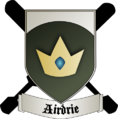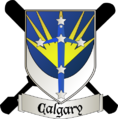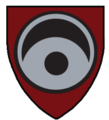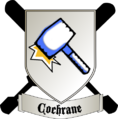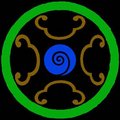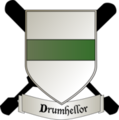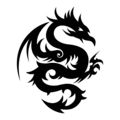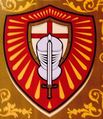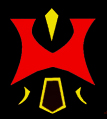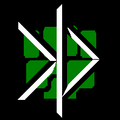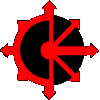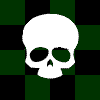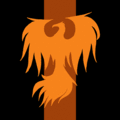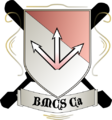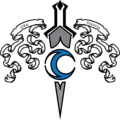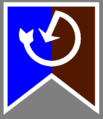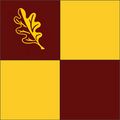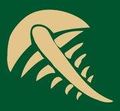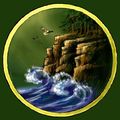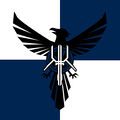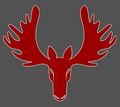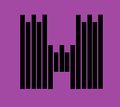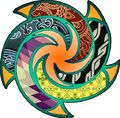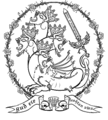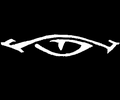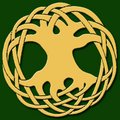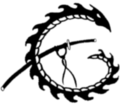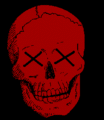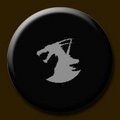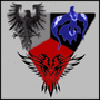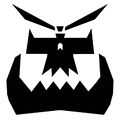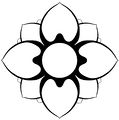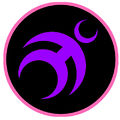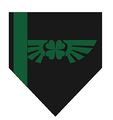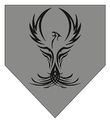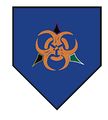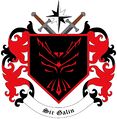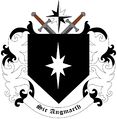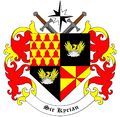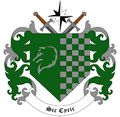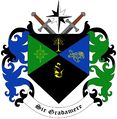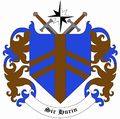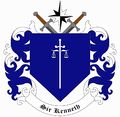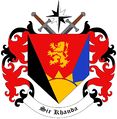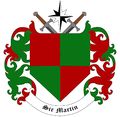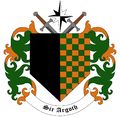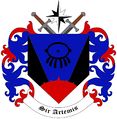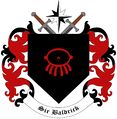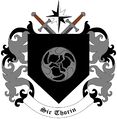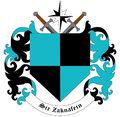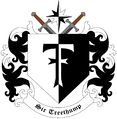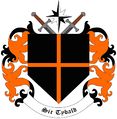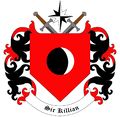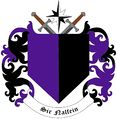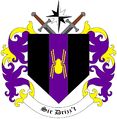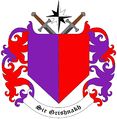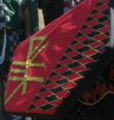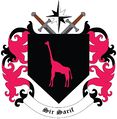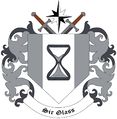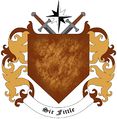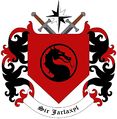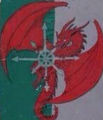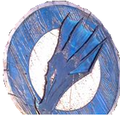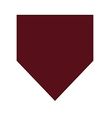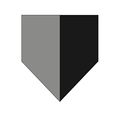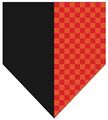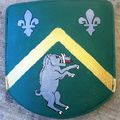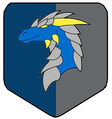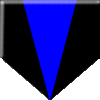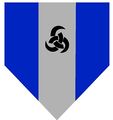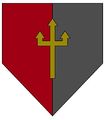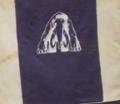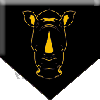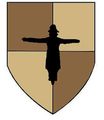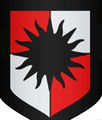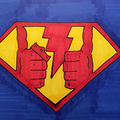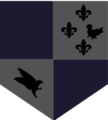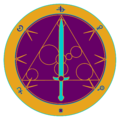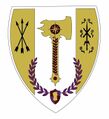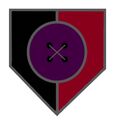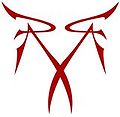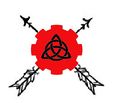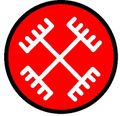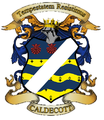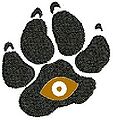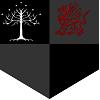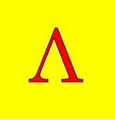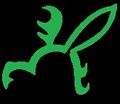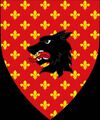Heraldry Overview and Gallery
A Brief History of Heraldry
Heraldry is the profession, study, or art of creating, granting, and blazoning arms and ruling on questions of rank or protocol, as exercised by an officer of arms. Heraldry comes from Anglo-Norman herald, from the Germanic compound harja-waldaz, "army commander". The word, in its most general sense, encompasses all matters relating to the duties and responsibilities of officers of arms.
To most, though, heraldry is the practice of designing, displaying, describing, and recording coats of arms and heraldic badges. Truly heraldic devices seem to have been first used in Carolingian times. Seals and banners confirm that they were being used in the Flemish area of Europe during the reign of Charlemagne (768–814 AD). Its origins lie in the need to distinguish participants in battles or jousts and to describe the various devices they carried or painted on their shields.
The emergence of heraldry as we know it today was linked to the need to distinguish participants quickly and easily in combat.
To "blazon" (or blazoning) arms means to describe them using the formal language of heraldry. The system of blazoning arms used in English-speaking countries today was developed by heraldic officers in the Middle Ages. The blazon includes a description of the arms contained within the escutcheon or shield, the crest, supporters where present, motto and other insignia. The focus of modern heraldry is the armorial achievement, or the coat of arms, the central element of which is the escutcheon or shield. In general, the shape of the shield employed in a coat of arms is irrelevant, because the fashion for the shield-shapes employed in heraldic art has changed through the centuries.
Traditional Parts of Heraldry
Escutcheon/Shield
In heraldry, an escutcheon, or scutcheon, is the shield displayed in a coat of arms. The escutcheon shape is based on the Medieval shields that were used by knights in combat. The shape varied from region to region and over time. As women did not go to war, they did not bear a shield. Instead, their arms were shown on a lozenge — a rhombus standing on one of its acute corners or a cartouche. This continues in much of the world, though some heraldic authorities, notably Scotland, uses ovals for women's arms. Noncombatant clergy also have used the lozenge and the cartouche or an oval for their armorial display.
Tinctures
Tinctures are the colors and patterns used in heraldry. In heraldic terms they are divided into standard "colors", "metals", and "furs". The Petra Sancta method was created in 1638 to render colors in black and white images of coats of arms: tinctures are indicated by a hatching convention where the dexter half of the shield is coloured and the sinister half hatched to denote the same colour. A new colour, Bleu-celeste, was introduced in the twentieth century Two "metals" are also used: Or and Argent. Certain patterns called "furs" appear in coats of arms. They are defined as tinctures, not patterns. The two common furs are ermine and vair. Ermine represents the winter coat of the stoat, which is white with a black tail. Vair represents a kind of squirrel with a blue-gray back and white belly. Sewn together, it forms a pattern of alternating blue and white shapes.
Tincture Specific Rules
Heraldry is essentially a system of identification, so the most important convention of heraldry is the rule of tincture. To provide for contrast and visibility, metals must never be placed on metals, and colors must never be placed on colors. There are also special exceptions to the rule of tinctures - generally for powerful individuals who wish to emphasize that ordinary worldly rules do not apply to them - usually using the two "metals".
Field
Another way of creating more variations is to vary the field. The field can be divided into more than one tincture. Many coats of arms consist simply of a division of the field into two contrasting tinctures. These are considered divisions of a shield, so the rule of tincture does not apply. The simplest possible arms consist of a plain field. The field can be divided into more than one tincture. Many coats of arms consist simply of a division of the field into two contrasting tinctures. These are considered divisions of a shield, so the rule of tincture does not apply.A line of partition may be straight or it may be varied. The variations of partition lines can be wavy, indented, embattled, engrailed, nebuly, or other forms. Each form of field division has a different name. A field divided in half vertically is called a "party per pale", where one divided horizontally would be a "party per fess".
The field of a shield, or less often a charge or crest, is sometimes made up of a pattern of colors, or variation. A pattern of horizontal (barwise) stripes, for example, is called barry, while a pattern of Vertical (palewise) stripes is called paly. A pattern of diagonal stripes may be called bendy or bendy sinister, depending on the direction of the stripes. In each case, there are always an even number of stripes, half of one colour and half of the other. Other variations to the field include the chequy (looks like a chess board), and the fretty (looks like lattice fencing. The Rule of tincture applies to all semés and variations of the field.
Honorable Ordinary
In the early days of heraldry, very simple bold rectilinear shapes were painted on shields. These could be easily recognized at a long distance and could be easily remembered. They therefore served the main purpose of heraldry—identification. As more complicated shields came into use, these bold shapes were set apart in a separate class as the "honorable ordinaries." Some heraldic writers distinguish between "honorable ordinaries" and "sub-ordinaries". While some authors hold that only nine charges are "honorable" ordinaries, exactly which ones fit into this category is a subject of constant disagreement. The remainder are often termed "sub-ordinaries", and narrower or smaller versions of the ordinaries are called diminutives. One herald says: "The first Honorable Ordinary is the cross," the second is the chief, the third is the pale, the fourth is the bend, the fifth is the fess, the sixth is the inescutcheon, the seventh is the chevron, the eighth is the saltire, and the ninth is the bar, while stating that "some writers" prefer the bordure as the ninth ordinary.
Charge
A charge is any object or figure placed on a heraldic shield or on any other object of an armorial composition. Any object found in nature or technology may appear as a heraldic charge in armory. Charges can be animals, objects, or geometric shapes. Apart from the ordinaries, the most frequent charges are the cross—with its hundreds of variations—and the lion and eagle. Other common animals are stags, wild boar, martlets, and fish. Dragons, bats, unicorns, griffins, and more exotic monsters appear as charges and as supporters. Animals are found in various stereotyped positions or 'attitudes'. Quadrupeds can often be found rampant—standing on the left hind foot. Another frequent position is passant, or walking, like the lions of the coat of arms of England. Eagles are almost always shown with their wings spread, or displayed. Few inanimate objects in heraldry carry a special significance distinct from that of the object itself, but among such objects are the escarbuncle, the fasces, and the key.
Motto
An armorial motto is a phrase or collection of words intended to describe the motivation or intention of the armigerous person or corporation. This can form a pun on the family name as in Thomas Nevile's motto "Ne vile velis." Mottoes are generally changed at will and do not make up an integral part of the armorial achievement. Mottoes can typically be found on a scroll under the shield. In Scottish heraldry where the motto is granted as part of the blazon, it is usually shown on a scroll above the crest, and may not be changed at will. A motto may be in any language.
Supporters and Augmentations
Supporters are figures placed on either side of the shield and generally depicted holding it up. These figures may be animal or human, real or imaginary. In rare cases plants or inanimate objects.
An augmentation is a modification or addition to a coat of arms, typically given by a monarch as a mark of favour, or a reward or recognition for some meritorious act.
Heraldry Within Belegarth
Within Belegarth, we see heraldry in the form of realm (location) heraldry, unit/house/orders heraldry, and finally personal heraldry. These are the three typical we will see heraldry in some form within the Belegarth community.
Realm Heraldry
Realm Heraldry is pretty straightforward. This is your realm symbol (charge) and colors (tinctures). You will find that with as many realms as exist in Belegarth. There is some intermingling of colors. For example, Thunder Guard and Wolfpack of the High Plains have black and red as their realm colors. If we look at it in the strict sense of what heraldry is, as listed above, you will quickly find that what we consider heraldry in Belegarth is not formally heraldry. But what we do have serves to identify the different realms, and quick identification was what traditional heraldry was built on. Below, you will find the heraldry for many of the realms. If yours is unlisted, please feel free to update this page with your realm heraldry.
Unit/House/Orders Heraldry
Unit/House/Orders heraldry is the next type of heraldry you find within Belegarth, This being the unit's colors (tinctures) and symbol (charge). There is some confusion around the different units due to the intermingling of colors. Still, with as many units/houses/orders that again exist in Belegarth, there is bound to be some intermingling of colors. Below are listed the heraldry of the units/houses/orders of Belegarth. If your unit/house/order is missing, please feel free to update this page.
Personal Heraldry
The last type of heraldry we see in Belegarth, perhaps the closest to traditional heraldry, is personal heraldry. This falls into two categories: Knights Heraldry and Non-Knight Personal Heraldry. In Belegarth, when a squire/apprentice gets elevated to the peerage, they take on their own colors (tinctures) and a symbol (charge). As the game grows, it becomes harder and harder to be creative and have distinctly personal colors (tinctures). Symbols (charges) are far simpler to make personal because we are not limited to the rules of traditional heraldry.
Some knights in Belegarth only have colors (tinctures). Sir Piper's colors are red, grey, and black. If we were looking at his shield in the traditional sense, it would be described as a party per pale of sable (black) and chequy in gules (red) and cendrée (grey).
Most knights have both colors and a symbol. Sir Par colors (tinctures) are purple and silver, and his symbol (charge) is an owl. If we were to look at his shield in the traditional sense, it would be described as a quarterly of purpure (purple) and cendrée (grey). The upper left quarter boasts an owl charge in argent (Silver) on a purpure field. The upper right quarter boasts a falcon charge in Sable (Black) on a cendrée field. The lower left quarter boasts a triple falcon charge in sable on a cendrée field, while the lower right quarter boasts a stylized flame charge in argent on a purpure field.
Where You Will Find Heraldry
In Belegarth, Heraldry is most often worn on a belt sash, seen on garb, or armor. It can also be seen in the form of a Standard/ banner or painted/appliqued on a fighter's shield. Many knights will have their squires wear their symbol (charge) on a white tabard for others to know to whom the squire is squiring. Some knights ask their retainers to wear a belt sash/war banner in their colors, and some have them wear both colors and symbol.
Gallery
Below is the heraldry of the realms, units/houses, Peers, and Non-Peer personnel for the Belegarth Community. It is the goal of Dragoon Antoinette of Thunder Guard to maintain this page so that everyone has up-to-date information when making decisions concerning heraldry within Belegath.
Realm Heraldry
-
Gondor (legacy)
Unit Heraldry
Perrage Heraldry
-
Sir Forrest of Avalon
-
Sir Tinman of Avalon
-
Sir Luthien of Avalon
-
Sir Galin of Avalon
-
Sir Colister of Avalon
-
Sir Morisato Keiichi of Wolfpack
-
Sir Dameon of The Fractured Lands
-
Syr Argent Drakesoul, Nap Dragon, Knight of Tir Asleen
-
Sir Ahlschwede Ugar, the Prince of Stench of Nan Belegorn
-
Sir Nénharma Lavincolmo of Grond
-
Sir Smiley the Uncompromisingly Forthright
-
Sir Kegg of Numenor
-
Sir Angmarth of Numenor
-
Sir Kyrian of Numenor
-
Sir Cyric of Numenor
-
Sir Gradamere of Numenor
-
Sir Hurin of Numenor
-
Sir Kennith of Numenor
-
Sir Rukus of Numenor
-
Sir Vihill of Numenor
-
Sir Jikanta of Numenor
-
Sir Khanda of Numenor
-
Sir Martin of Numenor
-
Sir Osmond of Numenor
-
Sir Argoth of Numenor
-
Sir Artemis Entreri of Numenor
-
Sir Baldric of Numenor
-
Sir Darklax of Numenor
-
Sir Thorin of Numenor
-
Sir Torrance of Numenor
-
Sir Zaknafein of Numenor
-
Sir Treethump of Numenor
-
Sir Tybald of Numenor
-
Sir Kalvic of Numenor
-
Sir Killian of Numenor
-
Sir Nalfien of Numenor
-
Sir Racter of Numenor
-
Sir Drizzt of Numenor
-
Sir Grishnakh of Numenor
-
Sir Jacques of Numenor
-
Sir Borric the Just of Numenor
-
Sir Klawx of Numenor
-
Sir Sarif of Numenor
-
Sir Diego the Goat of Numenor
-
Dame Volpin of Numenor
-
Sir Fittle of Numenor
-
Sir Jarlaxyl of Numenor
-
Sir Orso of Numenor
-
Sir Soth of Numenor
-
Sir Thane of the Highlands of Chaos
-
Sir Cedric Winterbourne of the Highlands of Chaos
-
Kaegan of the Highlands of Chaos
-
Dragoon Locutus of the Highlands of Chaos
-
Sir Par of the Highlands of Chaos
-
Sir Necronos of the Highlands of Chaos
-
Sir Ralimar of the Highlands of Chaos
-
Sir Diomedies of the Highlands of Chaos
-
Sir Spriggot of the Highlands of Chaos
-
Dragoon Dopp of the Highlands of Chaos
-
Sir Warghoul of the Highlands of Chaos
-
Sir Leaf Autumnsong of the Highlands of Chaos
-
Sir Rem of the Highlands of Chaos
-
Dragoon Slate of Pyke the Iron Port
-
Dragoon Antoinette the Moosewitch, Master Seneschal of Thunder Guard
-
Sir Anastasia of Western Flame
-
Sir Calarn the Black of Tir Asleen
-
Sir Xipher the Oakheart of Tir Asleen
-
Sir Farrin of Dunharrow
-
Sir Tiberius Hellhammer of Dunharrow
-
Sir Skydd of Dunharrow
-
Sir Kraken the Eldritch, First Knight of Minas Ithil
-
Sir Beauregaurd Brutus Elevo, the Implacable of Rhun
-
Sir Peter the Quick of Rhun
-
Sir Peregrine the Paragon of Paladins of Muxlovia
-
Sir Sorcia Januri Alathea the Matriarch of Rhun
-
Sir Frosty the Fierce of Rhun
-
Sir Arczhidea the Impellent of Rhun
-
Sir William MacGregor of Ered Duath
-
Sir Turin Adlerik of Ered Duath
-
Sir Phira of the Mountain Mercenaries
-
Sir Carneohatn of Arnor
-
Sir Daemarth of Arnor
-
Sir Fion of Arnor
-
Sir Elendiel of Dur Demarion
-
Sir Acrid the Scarecrow of Barad'Dun
-
Sir Horati of the Frost Hills
-
Sir Guts of the Slums of Shaolin
-
Sir Tempelhoff of Grond
-
Sir Juggernaut of Grey Haven
-
Sir Dunaur ThoronMegil of Middle Earth
-
Sir Thiadric Thumbs of Stygia
-
Warmaster Soo Ma Tai of Stygia
-
Warmaster Valas Hune of Stygia
-
Warmaster Kord of Behemoth Grove /Blood Moon Bay
-
Warmaster Bacchus
-
The Iron Halo, Headhunter Symbol
-
Khadine Kazi of Nan Belegorn
-
Khadine Tonberry of Nan Belegorn
-
Syr Havik Reaver, Harvester of the Crimson Gold of Grond
-
Sir Blademaster Aradin the Able of Albion
-
Sir Piknic the Prolific
-
Syr Talon of Dur-Demarion
-
Sir Slab of Avalon
-
Sir Daemon the Steadfast
-
House Heraldry for all House of the Smoking Mirror Blademasters
-
Kensman Haldor "Iron Wolf" Halvardson of Northlands
-
Sir Gorg the Blacksmith
-
Sir Kaimalr the Dreamer
-
Sir Ramoen, the Wolf of Albion
-
Syr Scylla
-
Sir Paolo
-
Sir Tandarr
-
Sir Farix
-
Sir Var of Dragonspire
Personal Heraldry
-
Hawke
Other Information
This page is currently maintained by Dragoon Antoinette the Moosewitch, Master Seneschal of Thunder Guard. If you have any symbol you feel needs to be added to these galleries, please feel free to add it and format it the same way as the rest or contact Antoinette at antoinette@belegarth.com, and she will be more than happy to assist you.



